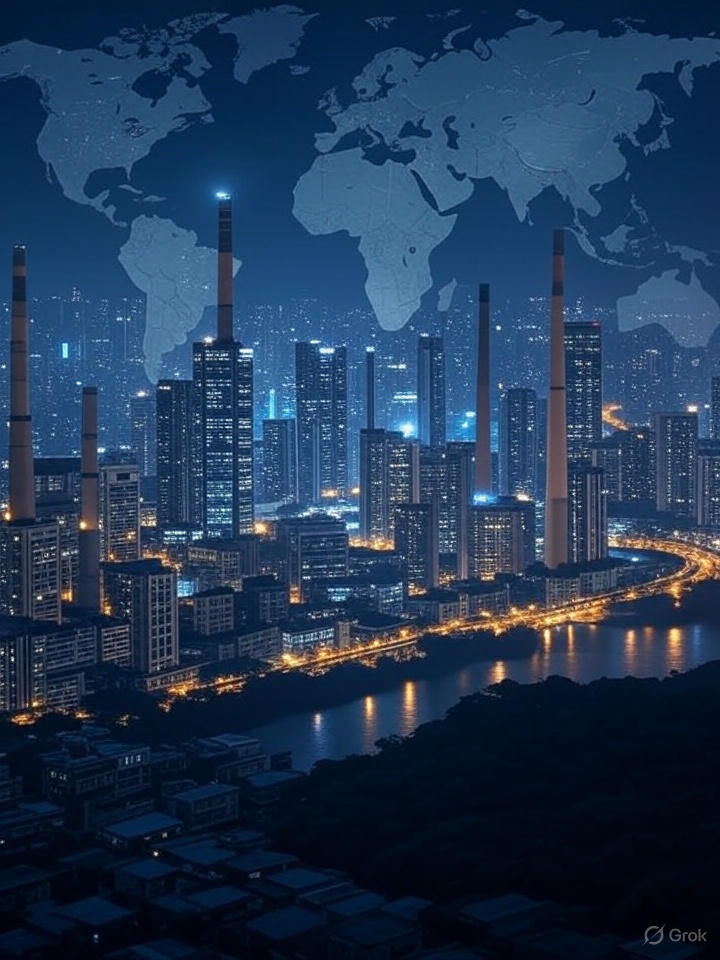India's Job Market Is Facing a Silent Crisis as Mid-Level Talent Freezes and Rural Unemployment Surges
- thebrink2028
- Jun 22
- 4 min read

The Reality of a Hiring Freeze
India's job market is undergoing a stark divide emerging between the opportunities for top executives and the stagnation faced by mid-level professionals and rural workers. Recent data paints a grim picture:
Hiring Decline: Staffing firms report an 18-20% quarter-on-quarter drop in hiring mandates in April-June 2025 compared to the previous year, with private sector hiring slowing across industries.
Unemployment Surge: The unemployment rate rose to 5.6% in May 2025 from 5.1% in April, driven largely by a contraction in rural agricultural jobs, impacting both men and women.
Mid-Level Stagnation: Mid-level managers (3-10 years of experience) face a hiring freeze, with companies prioritizing senior level CXO hiring, while entry-level roles see only 19% growth.
Rural Employment Crisis: The shift away from agriculture has reduced rural job opportunities, contributing to the overall unemployment spike. Of India’s 600 million labor force participants, only 80 million are in the formal sector, leaving millions vulnerable.
Skills Mismatch: A recent TheBrink report highlighted that 69% of Indian recruiters face a skills gap, with professionals lacking the expertise needed for evolving roles, particularly in tech-driven sectors.
Gig Economy Boom: Blue-collar gig jobs surged 92% in 2024, driven by e-commerce and logistics, but these roles offer low stability or upward mobility for mid-level professionals.
This data confirms a troubling trend: mid-level professionals and rural workers are increasingly sidelined, creating a polarized job market.
Why This Is Happening
The convergence of global and domestic factors is driving this crisis:
AI and Automation Disruption: Some companies are realigning operations and many are in FOMO to integrate artificial intelligence, reducing demand for mid-level roles traditionally focused on repetitive or process-driven tasks.
Example: IT firms like TCS, with a workforce of 607,979, are delaying wage hikes and tightening recruitment, citing environmental uncertainty and AI-driven efficiency gains.
Impact: Mid-level roles in IT, banking, and manufacturing are being automated or outsourced, with only 31% of professionals feeling prepared for GenAI adoption.
Global Economic Volatility: The crisis in the Middle East, tariffs and global inflationary pressures have made companies cautious, leading to reduced hiring budgets for non-critical roles. This hesitancy disproportionately affects mid-level managers, who lack the strategic importance of CXOs or the cost-effectiveness of entry-level hires.
Rural Employment Collapse: The contraction in agricultural activity due to its unawareness of its potential has decimated rural jobs, pushing them into an oversaturated urban gig economy. This shift compounds unemployment.
Talent Pipeline Breakdown: A startup founder’s frustration after interviewing 150 interns revealed a “broken talent pipeline,” with candidates lacking fundamental skills. Similarly, only 10% of India’s 1.5 million annual engineering graduates secure jobs due to a persistent skills gap.
The Alarming Trajectory
If current trends persist, India’s job market could face a deepening crisis, with severe socioeconomic consequences:
Widening Inequality: The focus on CXO hiring and gig economy growth will inflame income inequality. By 2030, the top 1% of earners (primarily CXOs and senior professionals) could control an even larger share of wealth, while mid-level and rural workers face stagnant wages and job insecurity. The formal sector’s 80 million employees may shrink further as ai and automation accelerates.
Mass Underemployment: With AI adoption projected to eliminate 20-30% of mid-level roles in IT, finance, and manufacturing, underemployment will rise. Workers may be forced into low-paying gig roles, with 92% growth in blue-collar gigs signaling a shift to precarious employment.
Rural-Urban Migration Crisis: The collapse of rural jobs could drive 50-100 million workers into urban centers, overwhelming infrastructure and increasing urban unemployment. Without significant investment in rural jobs, this migration will fuel social unrest.
Skills Gap Catastrophe: If the skills mismatch persists, 70-80% of graduates may remain unemployable. TheBrinks 2025 report projects that skills like AI proficiency and adaptability will dominate, leaving unprepared workers behind.
Corporate Retention Challenges: High CXO mobility (62% of professionals negotiating raises in 2025) will strain companies, forcing them to offer unsustainable compensation packages. This could lead to cost-cutting in mid-level and entry-level hiring, further freezing opportunities.
Concerns
Experts across fields are sounding alarms about the job market’s trajectory:
Technology Sector: A Senior executive emphasized that AI’s threat to entry- and mid-level jobs is “real,” urging companies to invest in upskilling to bridge the 69% skills gap.
Recruitment Industry: CXOs have unprecedented options for now, and mid-level talent faces a “talent freeze” as companies are prioritizing strategic roles.
Economic Analysts: India’s resilience in white-collar hiring warning that automation and global volatility could reshape talent strategies, leaving mid-level professionals vulnerable.
Social Impact Experts: Leaders at NGOs stress the need for rural skill-building to counter unemployment, but funding shortages limit scale.
Startup Founders: A tech founder’s concern about interviewing 150 interns underscored a “broken” talent system, predicting that without educational reform, India’s demographic dividend could become a liability.
The trajectory is clear: India risks a job market apocalypse if immediate action isn’t taken.
By 2030, expect the following outcomes:
Social Stratification: A two-tiered workforce will emerge, with a small elite of CXOs and tech-savvy professionals thriving, while millions of mid-level and rural workers face unemployment or low-wage gig jobs.
Economic Stagnation: The skills gap and hiring freeze could choke India’s growth, reducing its appeal as a global talent hub. Multinationals may shift to other markets if India’s workforce cannot adapt to AI-driven demands.
Urban Overload: Unchecked rural migration could lead to slum expansion, increased crime, and strained public services in cities like Mumbai and Delhi.
Youth Disillusionment: Gen Z and millennials, already frustrated by a “broken” system, may fuel social unrest if job opportunities remain scarce.
To navigate this crisis, individuals and organizations must act decisively. (contact thebrink2028@gmail.com for more.)
The job market’s silent crisis is serious. Without urgent intervention, India’s demographic dividend can turn into a demographic disaster, leaving millions on the brink of economic despair.
-Chetan Desai (chedesai@gmail.com)


